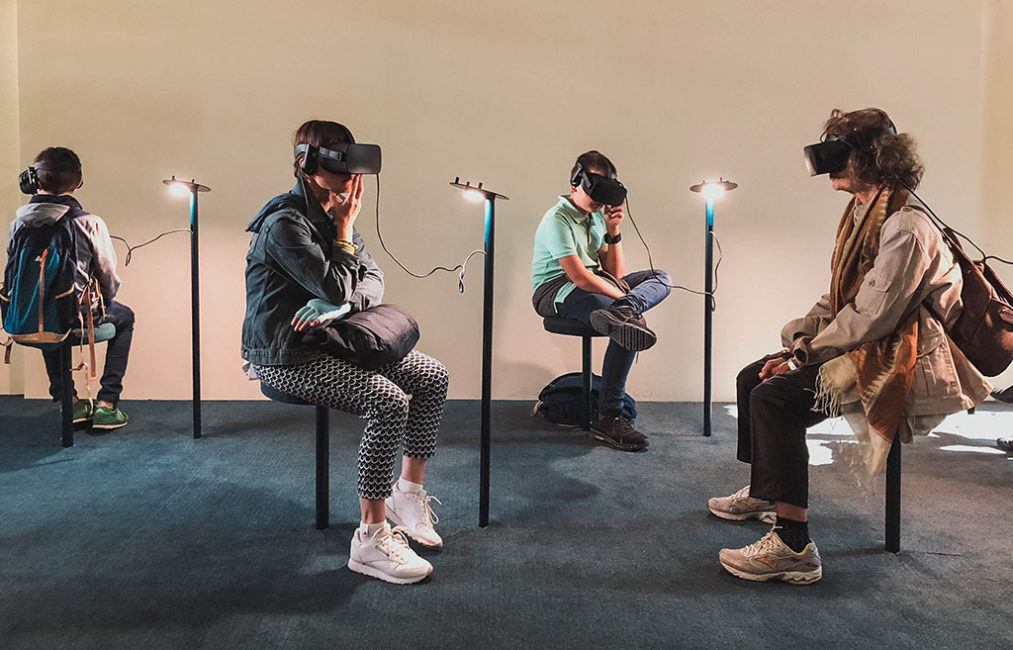Human Requirements for Immersive Experiences
mediaX has been supporting research in these areas at Stanford for 20 years. A key advantage of research in academic environments is the opportunity to stretch our research questions beyond current applications – to think deeply and prepare for the future. These sessions highlight insights from recent research.
CLICK HERE for a case study on the creation of mediaXploration, our virtual platform.
Colloquium Series
In the Immersion for Collaboration sessions you’ll hear from: Nick Haber,AI for Affect, Personalization and Reciprocity: Modeling the Self and the Other, Renate Fruchter, Attention and Engagement for Teamwork and Ivan Davies, Players First: The Responsibility & Opportunity of Multiplayer Video Games Today
In the Immersion for Discovery sessions you’ll hear from: Chris Chafe, Diagnosing Acoustic Latency: Human Perception of Milliseconds, Allison Okamura, Engineering for Tactile/Haptic Thresholds and Ge Wang, The Artful Design of Immersion
In the Immersion for Learning sessions you’ll hear from: Aditya Vishwanath, The Many Futures of Virtual Learning Environments, Carla Pugh, Quantitative Predecessors to Human Actions, Jill Helms, Not for the Faint of Heart: Creating an Environment for Learning in Virtual Spaces and Roy Pea, Leveraging Distributed Intelligence
In-World Sessions
In the Immersive Technologies for Collaboration sessions you’ll hear from: Dennis Wall, The Potential of AI in Healthcare, Parvati Dev, Crossing the Chasm with Crisis Communication, Renate Fruchter, Reimagine Collaboration and Ryota Yamada, Role Choices for Robotic Teammates
In the Immersive Technologies for Discovery sessions you’ll hear from: Walter Greenleaf, Transforming Healthcare with Technology, Pearly Chen, Creation and Discovery of Immersive Content, Ryan Burns, Concussion Education Reimagined and Kenji Suzuki, Imagining Alternatives with Immersive Engineering
In the Immersive Technologies for Learning sessions you’ll hear from: Bryan Brown, Language, Culture and Digital Media, Anna Queiroz, Immersion and Learning, Yuji Nakajima, Immersive Experience and Service Innovation and Tomás Nascimento, Using Immersive Environments for Transportation Training
Click on the names above to see the individual sessions OR click the session below to see a playlist of each sessions talks.

Immersion for Collaboration
What are the human requirements for collaboration and teamwork in immersive environments?

Immersion for Discovery
What contributes to the human experience of discovery in immersive environments?

Immersion for Learning
What are the human requirements for learning in immersive environments?